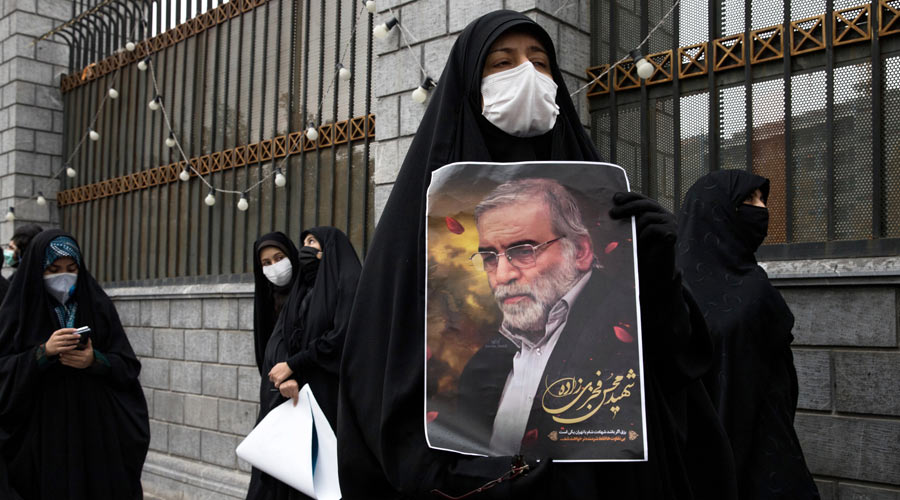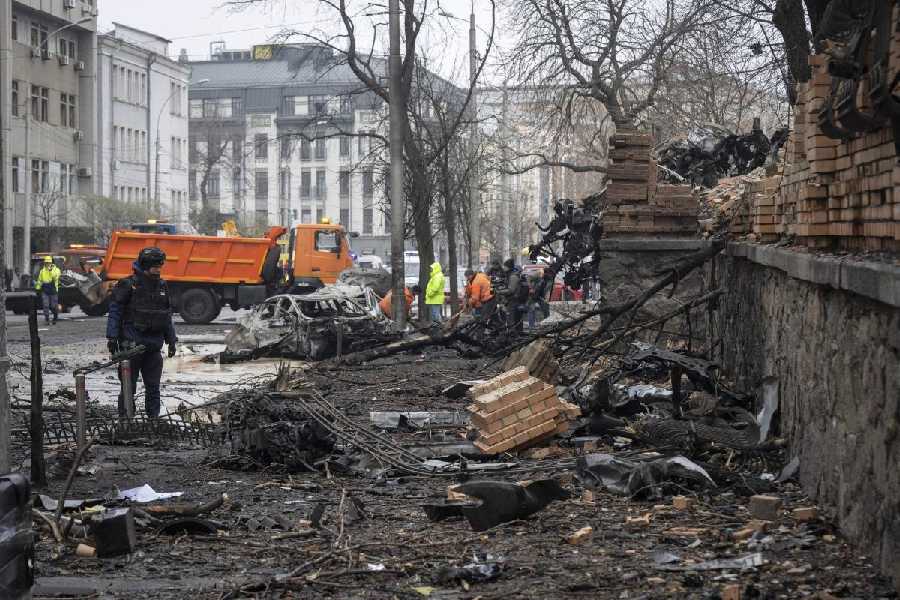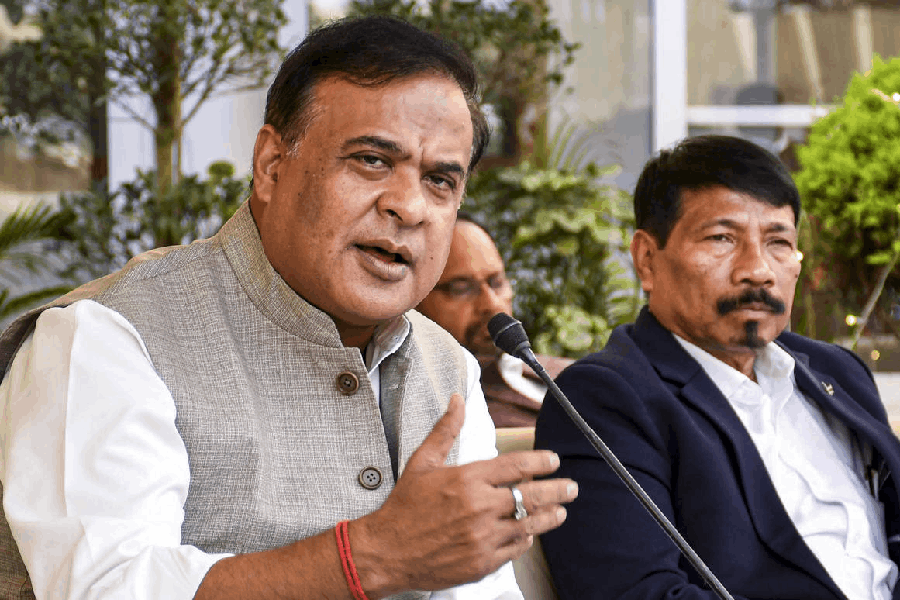Iran’s top nuclear scientist woke up an hour before dawn, as he did most days, to study Islamic philosophy before his day began.
That afternoon, he and his wife would leave their vacation home on the Caspian Sea and drive to their country house in Absard, a bucolic town east of Tehran, where they planned to spend the weekend.
Iran’s intelligence service had warned him of a possible assassination plot, but the scientist, Mohsen Fakhrizadeh, had brushed it off.
Convinced that Fakhrizadeh was leading Iran’s efforts to build a nuclear bomb, Israel had wanted to kill him for at least 14 years.
Despite his prominent position in Iran’s military establishment, Fakhrizadeh wanted to live a normal life. He craved small domestic pleasures: reading Persian poetry, taking his family to the seashore, going for drives in the countryside.
And, disregarding the advice of his security team, he often drove his own car to Absard instead of having bodyguards drive him in an armoured vehicle. It was a serious breach of security protocol, but he insisted.
So shortly after noon on Friday, November 27, he slipped behind the wheel of his black Nissan Teana sedan, his wife in the passenger seat beside him, and hit the road.
An elusive target
Since 2004, when the Israeli government ordered its foreign intelligence agency, the Mossad, to prevent Iran from obtaining nuclear weapons, the agency had been carrying out a campaign of sabotage and cyber attacks on Iran’s nuclear fuel enrichment facilities. It was also methodically picking off the experts thought to be leading Iran’s nuclear weapons programme.
Since 2007, its agents had assassinated five Iranian nuclear scientists and wounded another.
This time they were going to try something new.
Iranian agents working for the Mossad had parked a blue Nissan Zamyad pickup truck on the side of the road connecting Absard to the main highway. The spot was on a slight elevation with a view of approaching vehicles. Hidden beneath tarpaulins and decoy construction material in the truck bed was a 7.62-mm sniper machine gun.
Around 1pm, the hit team received a signal that Fakhrizadeh, his wife and a team of armed guards in escort cars were about to leave for Absard, where many of Iran’s elite have second homes and vacation villas. The assassin, a skilled sniper, took up his position, calibrated the gun sights, cocked the weapon and lightly touched the trigger.
He was nowhere near Absard, however. He was peering into a computer screen at an undisclosed location thousands of miles away. The entire hit squad had already left Iran.
Reports of a killing
The news reports from Iran that afternoon were confusing, contradictory and mostly wrong.
A team of assassins had waited alongside the road for Fakhrizadeh to drive by, one report said. Residents heard a big explosion followed by intense machine gun fire, said another.
One of the most far-fetched accounts emerged a few days later. Several Iranian news organisations reported that the assassin was a killer robot, and that the entire operation was conducted by remote control.
Iranians mocked the story.
Thomas Withington, an electronic warfare analyst, told the BBC that the killer robot theory should be taken with “a healthy pinch of salt”.
Except this time there really was a killer robot.
Preparations for the assassination began after a series of meetings towards the end of 2019 and in early 2020 between Israeli officials, led by the Mossad director, Yossi Cohen, and high-ranking American officials, including President Donald J. Trump, Secretary of State Mike Pompeo and the CIA director Gina Haspel.
Israel had paused the sabotage and assassination campaign in 2012, when the US began negotiations with Iran leading to the 2015 nuclear agreement. Now that Trump had abrogated that agreement, the Israelis wanted to resume the campaign.
In 2018, Israel’s Prime Minister, Benjamin Netanyahu, held a news conference to show off documents the Mossad had stolen from Iran’s nuclear archives. Arguing that they proved that Iran still had an active nuclear weapons programme, he mentioned Fakhrizadeh by name several times. “Remember that name,” he said. “Fakhrizadeh.”
Programming a hit
Israel chose a special model of a Belgian-made FN MAG machine gun attached to an advanced robotic apparatus, according to an intelligence official familiar with the plot.
But the machine gun, the robot, its components and accessories together weigh about a ton. So the equipment was broken down into its smallest possible parts and smuggled into the country piece by piece, in various ways, routes and times, then secretly reassembled in Iran.
The robot was built to fit in the bed of a Zamyad pickup, a common model in Iran. Cameras pointing in multiple directions were mounted on the truck to give the command room a full picture not just of the target and his security detail, but of the surrounding environment. Finally, the truck was packed with explosives so it could be blown to bits after the kill, destroying all evidence.
A challenge was to determine in real time that it was Fakhrizadeh driving the car and not one of his children, his wife or a bodyguard.
The solution was to station a fake disabled car, resting on a jack with a wheel missing, at a junction on the main road where vehicles heading for Absard had to make a U-turn, some three quarters of a mile from the kill zone. That vehicle contained another camera.
At dawn Friday, the operation was put into motion.
The blue Zamyad pickup was parked on the shoulder of Imam Khomeini Boulevard.
The drive
As the convoy left the city of Rostamkala on the Caspian coast, the first car carried a security detail. It was followed by the unarmoured black Nissan driven by Fakhrizadeh, with his wife, Sadigheh Ghasemi, at his side. Two more security cars followed.
The security team had warned Fakhrizadeh that day of a threat against him and asked him not to travel, according to his son Hamed and Iranian officials. But Fakhrizadeh said he had a university class to teach in Tehran the next day and he could not do it remotely.
He refused to ride in an armoured car and insisted on driving one of his cars himself. “Let them kill,” he said in a recording Mehr News, a conservative outlet, published in November. “Kill as much as they want, but we won’t be grounded.”
The strike
Shortly before 3.30pm, the motorcade arrived at the U-turn on Firuzkouh Road. Fakhrizadeh’s car came to a near halt, and he was positively identified by the operators.
The convoy turned right on Imam Khomeini Boulevard, and the lead car then zipped ahead to the house to inspect it before Fakhrizadeh arrived. Its departure left Fakhrizadeh’s car fully exposed.
The convoy slowed down for a speed bump just before the parked Zamyad. A stray dog began crossing the road.
The machine gun fired a burst of bullets, hitting the front of the car below the windshield. The car swerved and came to a stop.
The shooter adjusted the sights and fired another burst, hitting the windshield at least three times and Fakhrizadeh at least once in the shoulder. He stepped out of the car and crouched behind the open front door. According to Iran’s Fars News, three more bullets tore into his spine. He collapsed on the road.
The first bodyguard arrived from a chase car: Hamed Asghari, a national judo champion, holding a rifle. He looked around for the assailant, seemingly confused.
Ghasemi ran out to her husband. “They want to kill me and you must leave,” he told her, according to his sons.
The blue Zamyad exploded.The entire operation took less than a minute. Fifteen bullets were fired.
New York Times News Service










